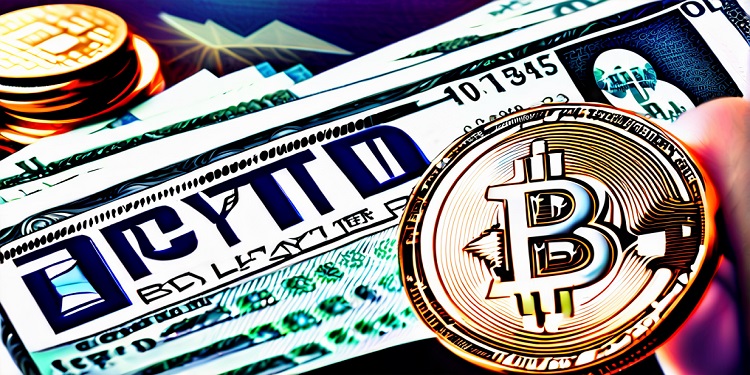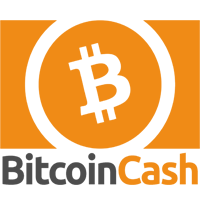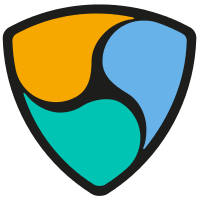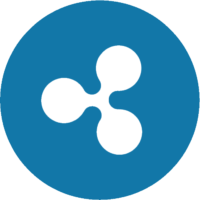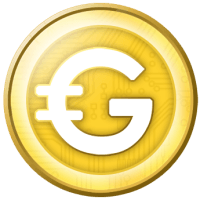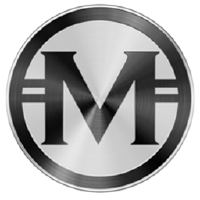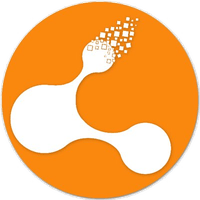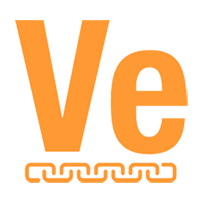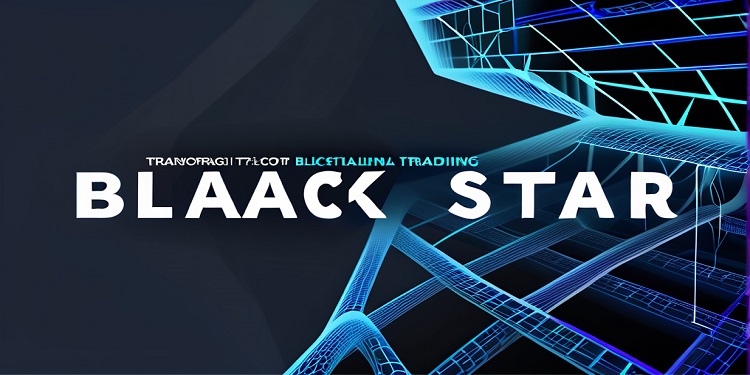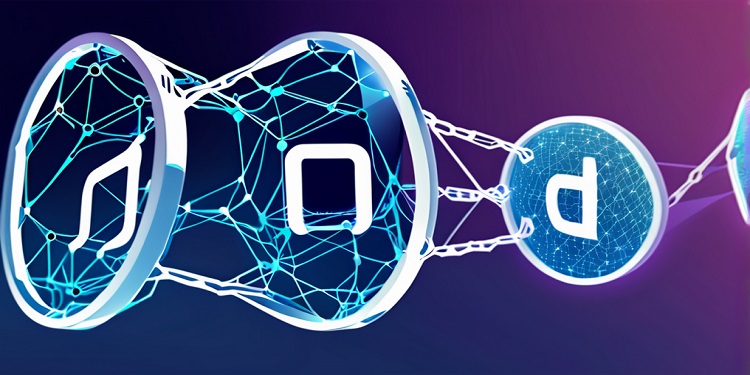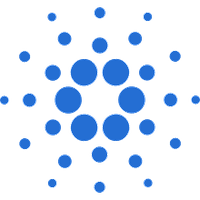
To create a different way in which cryptocurrencies are developed, to create a platform that complies with regulations while maintaining user privacy

$0.0 0.0%
$19,134,722,526
Pros & Cons
- Backed by a talented team of scholars and academicians
- Attempts to solve tough problems such as consensus votes and scalability
- Most of the features have not yet gone live
- Investors are not spread all over the world
Features
- Incorporates concepts such as cryptography, mechanism design, and distributed systems
- Uses code written in Haskell
- Comes with Ouroboros, a unique proof-of-stake algorithm
- Designed to comply with regulatory frameworks while maintaining privacy for users
- Can be upgraded through soft forks
Cardano Info
- Founded
- 2015
- Ownership
- Holders of Ada coins
- GitHub Last Updated
- Jan 5, 2018, 11:03 p.m. GMT +5.30
- Contributors
- 15
Overview
Cardano has emerged as a competitor to Ethereum, and interestingly, the man behind Cardano is a former chief executive officer (CEO) of Ethereum.
IOHK, a blockchain development company in Japan, launched a brand new blockchain called Cardano under the leadership of Charles Hoskinson. At around the same time, the platform’s cryptocurrency, called Ada, started trading on Bittrex, an exchange regulated in the US.
A crowd sale was held earlier, in which 10,000 investors received Ada vouchers. Once the cryptocurrency started trading, the voucher holders could download Daedalus, the official Cardano wallet, and use it to redeem their vouchers for the purpose of trading. Western investors, who were not permitted to take part in the crowd sale, can now visit Bittrex to purchase Ada tokens.
In the next two years, Cardano is expected to become a smart contracts platform in its own right. It will have its own database of protocols that can be used by developers to create decentralized applications.
Brief History of Cardano
The new smart contracts platform was created by one of the early creators of Ethereum, Hoskinson, who quit the Ethereum project even before it launched and partnered with Jeremy Wood to create a company called IOHK in 2014. A team of Japanese entrepreneurs approached IOHK in 2015 to discuss their interest in creating a new smart contracts platform with a digital currency of its own. They also wanted it to comply with existing regulatory frameworks within the blockchain network.
Since funds were required for the project, the entrepreneurs wanted to launch an initial coin offering (ICO) limited to the Asian market. Interacting with Bitcoin Magazine, Hoskinson said that the entrepreneurs were of the opinion that “it would be really nice to do a large-scale distribution in Asia, as opposed to the Western world, which is already saturated with cryptocurrencies.”
The entrepreneurs hired IOHK to create compliant software for the crowd sale. They also hired Attain, a Japanese company, to manage the crowd sale and another organization called Cardano Foundation to manage the auditing and oversight. Accordingly, the crowd sale was held for a period of two years, from 2015 to 2017, and succeeded in raising $62 million. Around 30 billion Ada vouchers were sold during this period. Interestingly, the supply of Ada is limited to 45 billion. Since Ada vouchers were never sold to investors in the US, the crowd sale did not have to comply with the laws set down by the US Security and Exchange Commission.
The team of entrepreneurs behind the crowd sale called itself Emurgo and signed a five-year agreement with IOHK. According to the terms of this agreement, IOHK had to create a new smart contracts platform called Cardano. The deal between IOHK and Emurgo will expire in 2020. In the meantime, Emurgo will serve as a studio to design decentralized apps and smart contracts that will be run on the Cardano platform.
Reasons to Use Cardano
The founders of Cardano wanted it to become the world’s first blockchain based on scientific philosophies. It not only complies with regulatory frameworks, but also offers 100% privacy.
Cardano is getting noticed for many reasons:
Ouroboros: One of the major features of Cardano is Ouroboros, a new proof-of-stake algorithm. The developers of the platform say that this algorithm is capable of protecting the blockchain from spam attacks. In addition, Ouroboros has the ability to create side chains that can not only intensify security, but also protect privacy.
Haskell: This is the language used to build Cardano. Haskell is special because of its mathematical approach, which allows the writing of reliable and secure code. As a result, the number of bugs will be reduced. Haskell is, therefore, attractive to cryptocurrency holders who lose a lot of money because of bugs in the system.
Bittrex Exchange: The first exchange to provide support for Ada is Bittrex. Today, this exchange reports the highest Ada trading volume.
Ada Debit Card: The Ada debit card, which Cardano intends to launch shortly, can be loaded through Daedalus, the Cardano wallet. Card holders can then use it to purchase products and services.
For all the above-mentioned reasons, experts consider Cardano to be superior to Ethereum. The platform and its associated cryptocurrency definitely have the potential for quick growth. This means that the value of Ada is bound to increase in the near future.
How Does Cardano Work
Cardano can be simply defined as a complete blockchain that was built from scratch through Haskell, a programming language designed by Philip Wadler. Because of its mathematical approach, code written in Haskell is more precise, leading to the creation of a reliable and secure protocol.
Proof of Stake: The heart of Cardano is a proof-of-stake algorithm called Ouroboros. Most cryptocurrencies, including Bitcoin use proof of work, a system that requires miners to solve cryptographic puzzles to get consensus to change the public ledger. A proof-of-stake system, on the other hand, requires maximum votes from coin holders to get consensus. This makes a proof-of-stake system energy efficient, enables fast transactions, and throws the door open for governance schemes in which coin holders can control the evolution of the protocol.
Ouroboros features a peer-reviewed mathematical security proof, a system that received wide approval at a cryptography conference called Crypto 2017. It has turned out to be so effective that a number of other projects such as Snow White, Algorand, and Ethereum have also started work on proof-of-stake systems.
Byron: Cardano has made live only that part of its platform called “Byron.” Many of the functionalities are not yet live because it requires more coin holders before it can start running completely. Although Ouroboros is fully functional, consensus is limited to private nodes till the system can become fully live. According to the Cardano founder Hoskinson, this may take up to six months.
Shelley: Shelley is that part of the Cardano platform that will go live during the first six months of 2018. When this happens, Cardano will become an independent, full-fledged cyryptocurrency in its own right. Even if IOHK shuts down and its founder dies, Cardano will run forever in the form of Shelley.
Shelley will also prepare the platform for a variety of features such as side chains, smart contracts, metadata, multi-party computation, and much more. Each feature will be gradually introduced into the platform. The founder of Cardano says that the features will be introduced as and when they are made available. Most of the features will be added in the course of 2018.
Virtual Machine (VM): IOHK is also in the process of creating a virtual machine similar to that of Ethereum. When it is ready, it will become Cardano’s computation layer and house self-executing code.
Plutus: The platform will also have Plutus, a lighter variant of Haskell, which will be used for high-assurance contracts.
New features will be added to the platform, which will allow developers to create decentralized apps in languages such as JavaScript, C, and Java. The platform also has plans to create a governance system that will allow on-chain decisions to be finalized and a treasury system that will retain part of transaction fees for development purposes.
In brief, Cardano will be launched slowly and steadily. The goal is to create a reliable platform, and the process is expected to spread over decades. The founder of Cardano describes it as a “rigorous, systematic project” backed by a number of principles.
Value of Cardano
Cardano is called the “Ethereum of Japan” for a good reason. It wasted no time in becoming the world’s sixth biggest cryptocurrency. CoinMarketCap reports that each Ada had a value of $0.20636 in December 2017. A few days later, the value more than doubled to $0.447912. Like all cryptocurrencies, Ada is volatile and its price keeps going up and down.
Future of Cardano
Right now, nobody can make a precise prediction about Cardano. Many things about the new cryptocurrency are still unclear, especially due to the fact that Ada investors are concentrated in Asia. Japanese investors purchased 95% of Ada coins during the initial coin offering. The team behind Ada has not invested a great deal on marketing as their focus is on technology.
Although Cardano is a great competitor to Ethereum, one cannot make any statement about it so early because too many altcoins have come and gone while attempting to compete against Ethereum. I still feel that Ada value may go up this year only if it attracts enough investors who want to make a lot of money. Since Cardano is expected to evolve over a long period of time, any investment in Ada is to be considered a long-term investment.
Where to Buy Ada
Here is a step-by-step guide to creating an Ada wallet, obtaining Ada, and selling it:
Get Your Wallet: Before purchasing any Ada coins, you have to first obtain an Ada wallet. You can download Daedalus, the open-source wallet for Ada, by visiting the official Daedalus website. You only have to select the file that works best with your device and download it.
The program will be saved as “Daedalus” on your device. Once you have downloaded and installed Daedalus, you must choose your language. Before it can be used, the wallet has to be synced with Cardano’s blockchain, a process that can take up to 40 minutes. Once the wallet has become functional, you can give it any name of your choice. You need to write down your passphrase and wallet address and keep it in a secure place because you need it to open your wallet in future. You have to make sure that these important details do not reach the wrong hands. If someone else gets hold of these details, they can easily open your Ada wallet and take your Ada coins.
Purchase Ethereum and Exchange Ether for Ada: If you already own Ether, you don’t have to purchase any more. However, if you don’t have any Ether, you can easily purchase some at an Ethereum exchange. There are several reputed exchanges to choose from. If you prefer, you can purchase Bitcoin instead of Ether on Coinbase and then head over to Binance to get your Ada.
Get Ada on Binance: The next step is to register at Binance and select the basic or advanced trading platform. Then, you have to deposit your Ether on Binance and load the list of coins that can be traded for Ether on Binance. Select the ADA/ETH option and then input the number of Ether coins you would like to exchange for Ada.
Best Ada Wallets
At the time of writing, Daedalus is the only Ada wallet in existence. There is news of top hardware wallets such as Ledger Nano including support for the new cryptocurrency, but that has not yet happened.
According to the Daedalus website, it is the only open-source wallet with support for Ada, the cryptocurrency associated with the Cardano platform. It is the only peer-reviewed and provably secure proof-of-stake system. You can use Daedalus wallet to store your Ada coins securely. You just have to visit the download page on the Daedalus website to safely and securely download the wallet.
The good news is that Daedalus plans to include support for more cryptocurrencies. The wallet plans to evolve along with the Cardano platform and to become a blockchain app platform, a global cryptocurrency wallet, and an app store in the near future.
Resources
Click on the following resources to improve your understanding of the Cardano platform:
AuthorDavid Nugent
David is a forex trader and writer who has spent the last few years giving his opinion and spreading news about oncoming markets and trading tips. Besides from being a trader he is also a lifelong Everton fan and enjoys spending free time watching his beloved team in the premier league.



